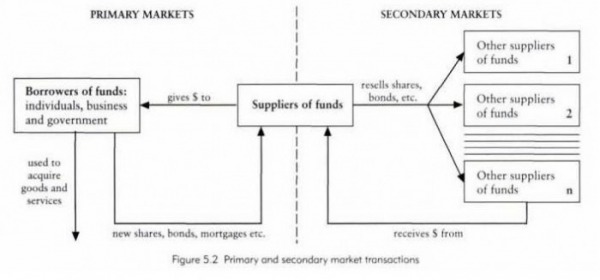Role of financial markets
The role of financial markets is to channel funds from economic entities who have a surplus, to those requiring funds. In doing this it mobilises savings into investment opportunities such as housing loans as it makes the connection between borrowers and lenders.
For example:
As products are created by individuals, businesses and governments, a return is provided. As this return grows into a profit, it is invested into financial intermediates by the providers of the product. The providers then become lenders as their savings are made available to borrowers in need of additional funds.
Main Types of Markets
The main types of financial markets in the Australian economy include primary and secondary markets.
Primary Markets:
Sell financial assets known as securities to investors who wish to raise their funds. The funds taken from the investors are directly received by the company selling the asset.
For example:
- Westpac bank selling shares to the public
- The sale of government bonds for finance spending
Secondary markets:
Trade these investments in securities, from the primary markets, with other investors not the issuing corporation. The funds received are not directed to the issuing corporations but to the investor trading the security. The majority of financial transactions are in secondary markets.
The most common secondary market is the share market, the share market is also a primary market.
Examples of financial markets include:
• Consumer credit
• Housing loans
• Business loans
• Short-term money market
• Bond market
• Share market
• Financial futures
• Foreign exchange
These examples are explained in more detail in Products & Providers


